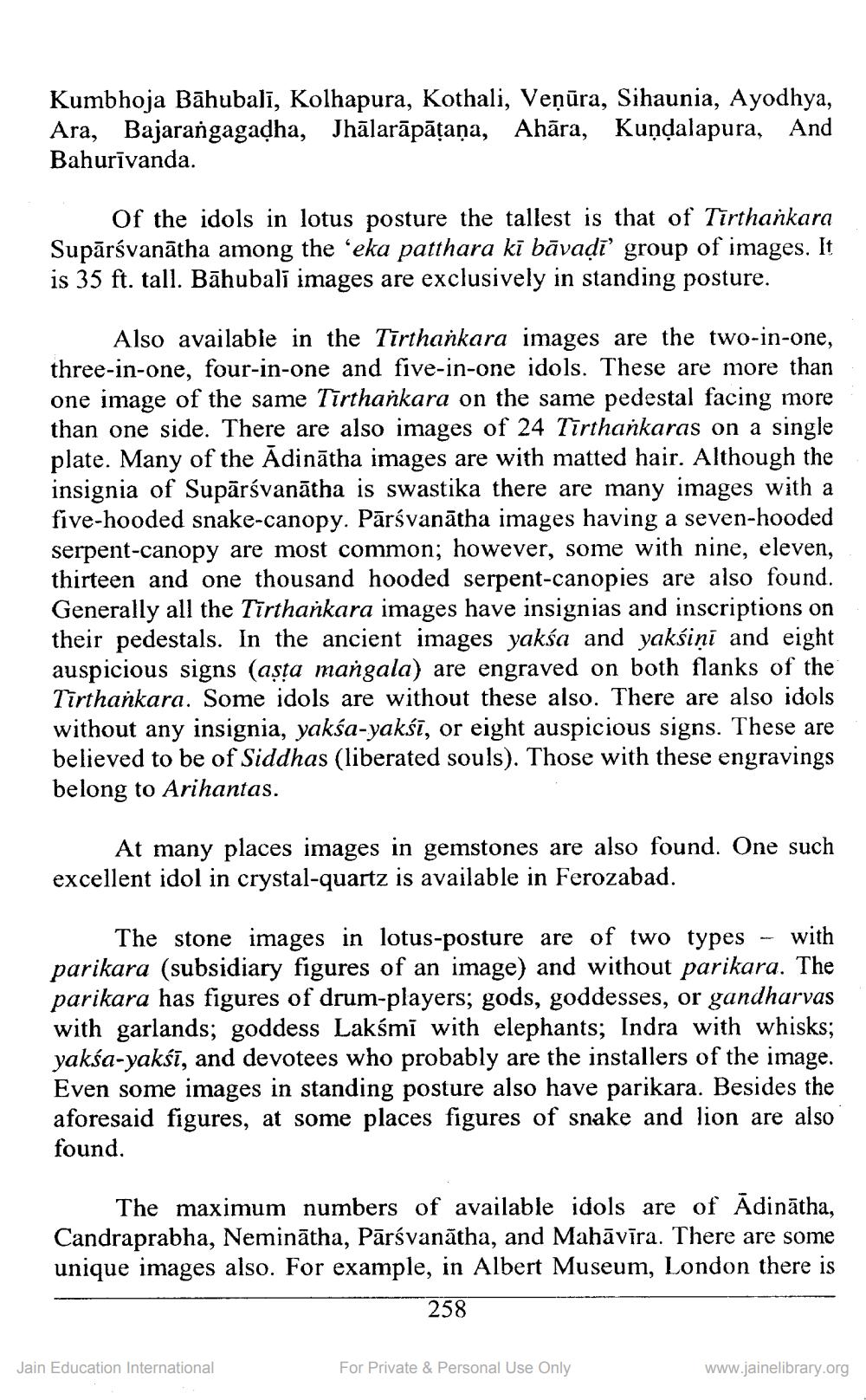________________
Kumbhoja Bāhubalī, Kolhapura, Kothali, Veņūra, Sihaunia, Ayodhya, Ara, Bajarangagadha, Jhālarāpātaņa, Ahāra, Kundalapura, And Bahurīvanda.
Of the idols in lotus posture the tallest is that of Tirthankara Supārsvanātha among the ‘eka patthara ki bāvadi' group of images. It is 35 ft. tall. Bāhubali images are exclusively in standing posture.
Also available in the Tirthankara images are the two-in-one, three-in-one, four-in-one and five-in-one idols. These are more than one image of the same Tīrthařkara on the same pedestal facing more than one side. There are also images of 24 Tīrthankaras on a single plate. Many of the Ādinātha images are with matted hair. Although the insignia of Supārsvanātha is swastika there are many images with a five-hooded snake-canopy. Pārsvanātha images having a seven-hooded serpent-canopy are most common; however, some with nine, eleven, thirteen and one thousand hooded serpent-canopies are also found. Generally all the Tirtharkara images have insignias and inscriptions on their pedestals. In the ancient images yaksa and yaksiņi and eight auspicious signs (asta mangala) are engraved on both flanks of the Tīrthankara. Some idols are without these also. There are also idols without any insignia, yaksa-yakśī, or eight auspicious signs. These are believed to be of Siddhas (liberated souls). Those with these engravings belong to Arihantas.
At many places images in gemstones are also found. One such excellent idol in crystal-quartz is available in Ferozabad.
The stone images in lotus-posture are of two types - with parikara (subsidiary figures of an image) and without parikara. The parikara has figures of drum-players; gods, goddesses, or gandharvas with garlands; goddess Lakśmi with elephants; Indra with whisks; yaksa-yaksi, and devotees who probably are the installers of the image. Even some images in standing posture also have parikara. Besides the aforesaid figures, at some places figures of snake and lion are also found.
The maximum numbers of available idols are of Ādinātha, Candraprabha, Neminātha, Pārsvanātha, and Mahāvīra. There are some unique images also. For example, in Albert Museum, London there is
258
Jain Education International
For Private & Personal Use Only
www.jainelibrary.org




